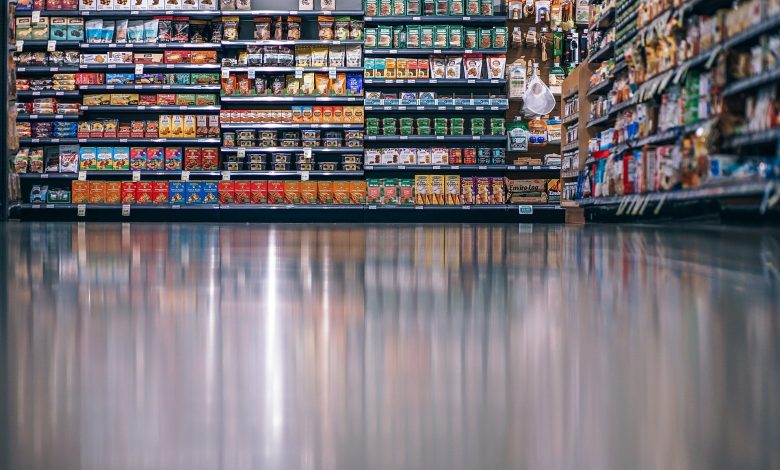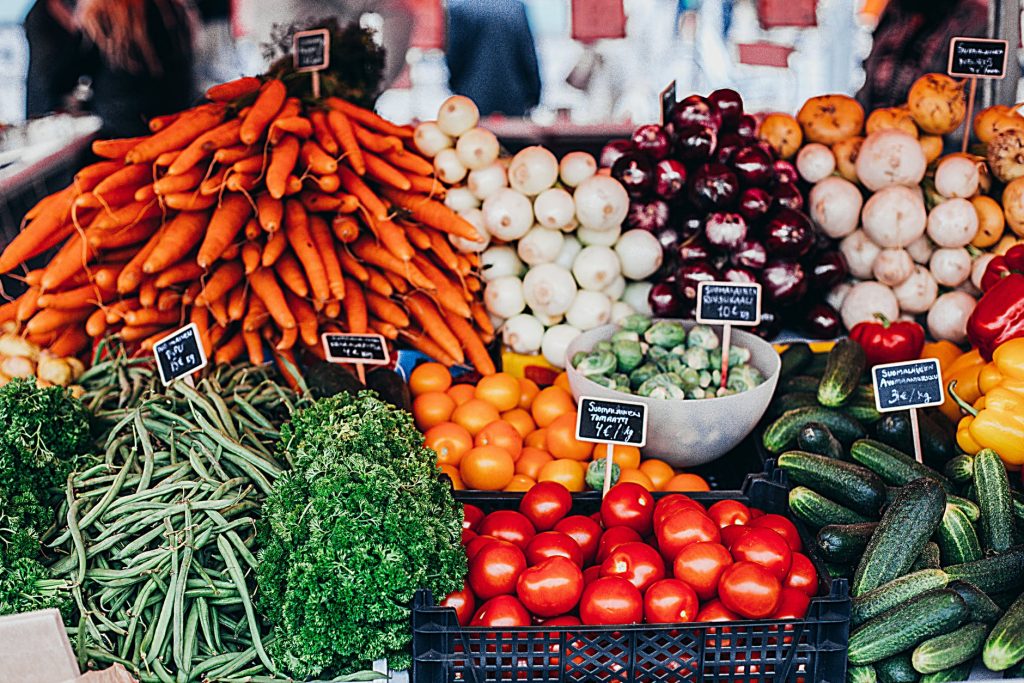
Your Guide to Reading Food Labels
When it comes to packaged food, there is more than meets the eye. While the front may depict a happy tomato, the tomato sauce you pick off the racks likely also contains additives, preservatives and other ingredients you do not know about. Knowing what’s in the food you purchase can result in you making better choices for a healthier lifestyle.
Most packaged food in jars, packets, bottles, and bags is labeled with information about the nutritional value, calories, and number of servings of that item. The premise of the food label is to communicate important information so as not to mislead the consumer. The U.S. and Canada have strict regulations when it comes to food labeling to promote fair practices among food manufacturers and suppliers.
Before we get into the nuts and bolts, here are a few points to understand before fully getting the label on a food package:
- Ingredients are generally listed in descending order by weight.
- When the label states that the food contains 0g of trans fat but includes partially hydrogenated oil, what it actually means is that the quantity of trans fat is less than 0.5g per serving. Therefore, eating more than one serving could have you consuming more trans fat than desired.
- The information given on the back of a food package is predicated on an assumption that the reader follows a standard 2,000 calorie a day diet. This does not mean that 2,000 calories a day is recommended for everyone. Your calorie intake may vary on the basis of your gender, age, activity level, and whether you are trying to gain or lose weight. The U.S. Food and Drug Administration (FDA) uses this figure simply because most Americans will have a daily caloric intake of approximately 2,000. Using this figure allows for wider applicability of the information on the label.
- To find out how many calories you need to consume in a day, you need to consider your age, gender, and activity level. Numerous calculators are available online that can do this math for you.
Product Dates
You have probably noticed some dates on your food package. The three dates that must be printed on the food label are:
- “Sell by” date – The date by which the manufacturer advises that the product be sold by the store that carries it
- “Use by” date – The date upto which the food item can be consumed, after which it may turn stale or lose its taste
- “Best if used before” date – The date that tells you how long the food will retain its peak flavor and quality

Serving Size
The serving size marks the beginning of the nutrition facts section of the label. All the content on the label of a package is based on the serving size, so this is what you should check first. Usually, the package will be labeled with the serving size and the number of servings contained. Serving sizes are given in familiar units, such as cups and pieces, followed by standardized units such as grams. The serving sizes make it easy to compare similar foods by using a common base.
Knowing your serving size and how many servings you consume is the base for determining the nutritional value in that item of food. You may think a small bag of chips is one serving, but sometimes it may contain two servings. You would need to double the numbers of calories, fat, sodium, and other items to get an accurate picture.
Total Calories and Calories from Fat
Calories tell you how much energy you obtain from a serving of the food. Eating too many calories a day is linked to being overweight and could even lead to obesity. Many Americans consume more calories than they need without meeting daily recommendations for nutrients such as vitamins and minerals.
A general guide to calories as below, based on a 2,000 calorie diet, provides a reference:
- Low – 40 calories and below
- Moderate – 100 – 400 calories
- High – 400 calories and above
Constant calorie counting is not necessary, but you would be well served to know which foods are high calorie. Remember, the number of servings you eat will determine quantity of calories consumed. It is recommended that about 30% of your calories come from fat. So in terms of the standard diet of 2,000 calories a day, about 600 calories should be in the form of fat. What form this fat comes in is important though. Saturated fats, such as those found in butter, pastry, cakes, and fatty meats, are linked to increased risk of high cholesterol and coronary heart disease. Unsaturated fats, as found in oily fish, vegetable oils, nuts, seeds, and avocados, are better for your health. Rather than try to limit your saturated fat intake, you should aim to replace it with healthy unsaturated fats. Below is a scale for whether a product’s fat content is low or high.
- Low fat – 3g or less per 100g
- High fat – 17.5g or more per 100g
- Low saturated fat – 1.5g or less per 100g
- High saturated fat – 5g or more per 100g
Trans fat is no longer recognized as generally safe by the FDA. The deadline for manufacturers to eliminate artificial trans fats from products was 18 June 2018 in the U.S. Products created before 18 June 2018 have to comply by 1 January 2020.
Manufacturers often make claims about a product being low-fat or reduced-fat, but these are not always the healthier alternative. They often fill the gap made by the addition of sugar. So read the nutrition information to make comparisons on the sugar and fat content for the base and the low-fat product.
For example, if there are 250 calories in a serving and the container packs 2 servings, there would be 500 calories in total. If you ate the entire package, you would consume 500 calories and leave only 1,500 for the rest of your day. If 110 calories are from fat in one serving, then nearly half of the calories consumed would be from fat. If you ate the whole package, you would consume 220 calories of fat.

Ingredients
The ingredients used in the food product are listed using their common name in descending order by weight. The ingredient that weighs the most is listed above and the ingredient that weighs the least is listed last. So if the first few ingredients contain saturated fats, it’s worth knowing that these make up a large proportion of your food. Vitamins usually appear later down the list, but their impact is still significant. Some breakfast cereals are fortified with extra nutrients, making them a good source that can have a positive impact on our diets.
Sugar: Be alert for the quantity of sugars present in your food. Sugars are added for multiple reasons, including flavor and preservation. Sugars on the label can be disguised under other names, such as honey, syrup, nectar, molasses, fruit juice concentrate, and anything ending in ‘-ose’ – fructose, glucose, dextrose, and maltose. Naturally occurring sugars, on the other hand, need not be ruled out so hastily. Sugars in unsweetened fruit juice are naturally occurring, but the sugars are detached from the beneficial fiber matrix of the fruit. Hence, it is recommended that no more than 100-150ml of juice is consumed per day.
Salt: Salt is also added to many consumables, even things you may not think of as salty, such as biscuits, bread, and cakes. While small amounts of salt can contribute to our maximum of 6g per day (equivalent to a teaspoon), too much is linked with increased risk of heart disease and stroke. Most of us consume more than this recommended quantity, and over 70% of it comes from packaged food or food from restaurants. To meet the criteria of being low in salt, a food must contain 0.3g or less per 100g. A product that is high in salt will have 1.5g of salt or more per 100g. Some products list sodium instead of salt, and you will need to multiply the sodium amount by 2.5 to work out the salt content. Be watchful for whether the sodium is listed in grams or milligrams.
Nutrients
This section of the food label lists carbohydrates, fats, protein, cholesterol and some select vitamins and minerals. If you only pay attention to one part of the label, this would be the one to focus on. The nutrients listed first include saturated fat, trans fat, cholesterol, and sodium. Consuming these in excess can increase the risk of heart disease, blood pressure, hypertension, and even some cancer.
Protein: Despite the buzz around protein in the wellness community, almost no one in the United States is in danger of insufficient protein. Therefore, other than for elite athletes, most people do not need to worry about their protein intake.
Cholesterol: Similar to concerns regarding protein, while blood cholesterol is an important health consideration, it is generally accepted that average person gets a sufficient amount from their food.
Carbohydrates: Not all carbohydrates are created equal. It is best to check the ingredients list for whether the carbohydrates come from whole grains such as quinoa, brown rice, whole wheat flour, whole grain oats, etc.
As part of a healthy diet, make sure you get enough of the beneficial nutrients your body needs, such as calcium, dietary fiber, iron, magnesium, potassium, and Vitamins A, C, D and E. For example, getting enough calcium is linked to a reduced risk of osteoporosis, and getting enough dietary fiber promotes healthy bowel function. Dietary fiber has been identified as a “nutrient of public concern” on account of the health risks associated with not getting enough of it.
By making clever use of the nutrients section of the label on food packages, you can not only limit your consumption of non-essential nutrients, but also increase consumption of the nutrients you need in greater quantities.

Daily Value
Daily Values are included in some, but not all, packaged foods. Daily Values are the recommended quantities of nutrients that should be obtained. These values are not a specific prescription for good health. Each person’s physical constitution is unique, and only a dietitian or health professional should be trusted to provide nutritional advice for your own specific needs. The Daily Values provided on food packages are merely recommendations by national health experts. These figures are in absolute values based on a 2,000 calorie diet. Percent daily values are recommendations in the form of percentages of the total daily recommended amount of that nutrient.
Percent Daily Value
A footnote may sometimes be included in food package labels with respect to percent daily values. The footnote would read something along the lines of: “Percent Daily Values are based on a 2,000 calorie diet. Your daily values may be higher or lower depending on your calorie needs.”
Percent Daily Values give how much the food in the package contributes to your recommended intake of a given nutrient, if your diet is approximately 2,000 calories a day. This assumption may or may not always be stated. You can use this figure to discern whether you are getting enough of nutrients like calcium, fat, protein, and various vitamins. It can also help you limit your consumption of trans fats, saturated fats, and cholesterol.
Even if your diet results in you consuming more or less than 2,000 calories a day, you can still use the Percent Daily Value figure as a guide. It can tell you whether a food is high or low in a particular nutrient. The general rule is that a food containing 5% or less of a nutrient is low, and a food containing 20% or more is considered a good source of that nutrient. Whether a nutrient is high or low should be seen in the context of whether you want to limit or increase your intake of that nutrient.
So suppose a certain food provides you with a Percent Daily Value of 20% of calcium, and you eat the entire packet. You would want to supplement your calcium intake with other foods so you can get the balanced 80% through your other meals.
The Percent Daily Value enables you to make comparisons between food, although you will have to make sure they have similar serving sizes. Serving sizes for similar types of food are generally consistent, so comparison should be simple. In this manner, the Percent Daily Value can also help you verify claims such as “reduced,” “low fat,” and “nonfat.”

Foods Without a Nutrition Label
Exemptions from the requirement of food labeling include fresh fruits and vegetables, tea, coffee, herbs, spices, flours, some vinegars, and alcoholic drinks with a strength of over 1.2%. While we are advised to eat five helpings of fruit and vegetables per day, alcohol does not carry similar advice. Alcohol can have deleterious effects on health if consumed excessively, as well as adding unnecessary calories and sugar to our diets.
Changes in Food Package Labeling
When the nutrition label was first published in the 1990s, the main culprit for poor health was fat. The biggest health concern at the time was cardiovascular disease. Today, obesity and being overweight are the concerns of the times, and they carry with them a host of associated health risks. Labels have been revised to emphasize serving size, servings per container, and calories by printing them in larger font or in bold. The serving sizes have also been updated based on studies to reflect present eating habits. Normal serving sizes have become larger since the ‘90s. A standard serving used to be half a cup, but now is about two-thirds of a cup. Other changes to labeling include the following:
- Vitamin D and potassium are now included in the list of nutrients, since its been shown that most Americans do not get enough of them.
- Vitamin A and C are no longer listed. Though deficiencies were found in the American diet in the 1970s, the FDA has determined that they are now rare.
- Calcium and iron are still listed.
- Added sugars are shown separate from total sugars.
- Calories from fat is not shown anymore to reflect research that, more than the number of grams, it is the kind of fat consumed that is important. Americans are advised to limit trans fats and saturated fats and ingest fats in the form of monounsaturated and polyunsaturated fats.
- Daily values for sodium, Vitamin D, and dietary fiber have been revised.
By now, you should have a fair idea of how to look past the bright and colorful packaging to see the true nutritional value of your food. All of that packaging is designed to grab your attention and get you to buy a product that may not always be good for you. Turn the packet over, go to the ingredients list, and use your knowledge to make better choices.



